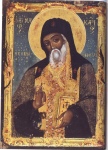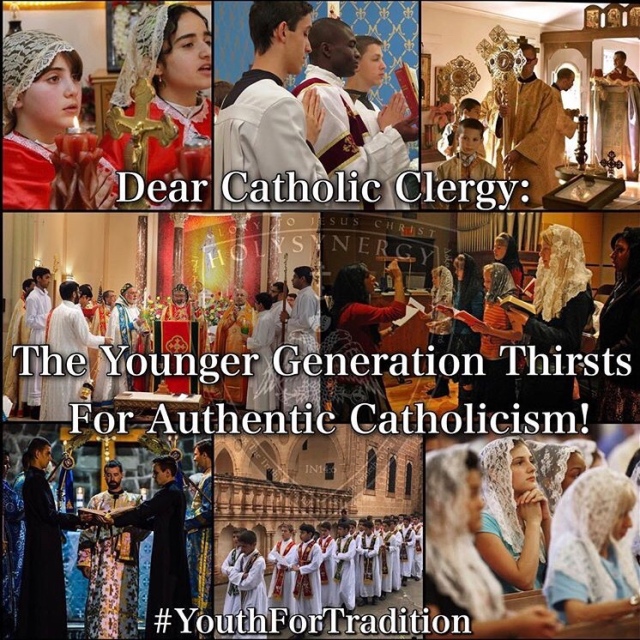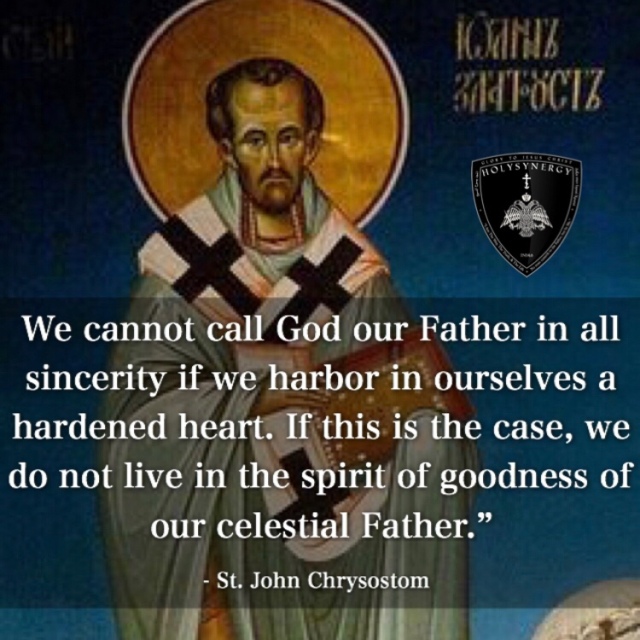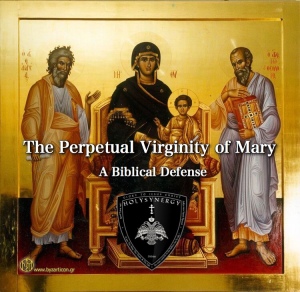
In this article we will be discussing the traditions of the Eastern Churches and explain how they have had a impact on the Latin Church throughout the centuries. In a predominately Western world in which hardly recognizes the existence of the Eastern Churches, we aim to not only inform our viewers for the sake of educational purposes, but to also show the equal importance of the Eastern Churches.
1. The Liturgy and the Nicene Creed
As we are all aware, the Creed of the first Ecumenical Council was written by the Council Fathers to preserve orthodoxy and to combat the heresy of the Arians. Before catechumens were baptized into the Church, they were first required to profess the Nicene Creed before the church to prove that they accepted the true faith and renounced the evils of the world. This is still practiced in the Roman Rite. The recitation of the Nicene Creed within the Divine Liturgy before the Eucharist was later adopted by the Church of Antioch in the 5th century. The Catholic Encyclopedia states: “The recitation of all the Nicaeo-Constantinopolitan Creed at the Eucharist seems to have begun, according to Theodore the Reader, at Antioch under Peter the Fuller in 471 (though James of Edessa says that it was adopted as soon as it was composed), and to have been adopted by Constantinople by Patriarch Timotheus in 511.” (1). The Church of the West did not adopt the use of the Nicene Creed until 589 within the churches of Spain and Galicia. The third Council of Toledo states: “That the creed of the faith be said in all churches of Spain and Galicia in accordance with the form of the Oriental churches and of the council of Constantinople at which 150 bishops were present, that it be sung with a clear voice by the people before the Lord’s Prayer is said.” (2). The Pope of Rome, His Holiness Pope Benedict XIV, confirms this to be a historical fact. (3).
2. Holy Friday (Good Friday).
As we are all aware, it is on Holy (Good) Friday that we commemorate the crucifixion of our Lord and Savior Jesus Christ for having saved us through His death on the cross. In the Latin Church, this is done by kissing the Crucifix after a procession is done. In the East we have a similar practice of venerating the Crucifix on Holy Friday. However, the Body of Christ is also removed from the Cross, wrapped in a white cloth, and carried to the altar during the Apokathylosis Service. The clergy also process with what is called a “Epitaphios” which is an icon of Christ on linen depicting him after he has been removed from the cross. The practices in which we can now see being used during Holy Friday comes from a night procession that was practiced within the Church of Jerusalem during the 4th century. A series of readings would also be read to the faithful as they would gather at Calvary for the hours that Jesus was crucified and died. The ceremony concluded with the veneration of the Holy Cross. The Pope of Rome, St. Sergius, later introduced the practice of venerating the cross to the Latin Church for Good Friday and established it as a practice in the Lateran Basilica. (4). Earlier, we have referenced the Papal Bull ‘Allatae Sunt’ by Pope Benedict XIV. Within this same Papal Bull, he also confirms that this is a historical fact. “Continuing with Our topic, Amalarius in his de Divinis Officiis, chap. 14 (relying on the authority of St. Paulinus’ Epistolary ad Severum) relates that the Cross on which Christ hung was exposed for adoration of the faithful in the church of Jerusalem on Good Friday of Holy Week only. He declares that the ceremony of the adoration of the Holy Cross which forms part of the Good Friday service in every Latin Church until the present day derived from the practice of the Greeks.” With that in mind, it opens to the next subject.
3. The Use of Crucifixes
In his book “The Cross of Christ” by John R.W. Stott, he states: “The crucifix (that is, a cross to which a figure of Christ is attached) does not appear to have been used before the sixth century”. (5). His Eminence the Most Reverend Archbishop Joseph Tawil of blessed memory, former Eparch of the Melkite Greek Catholic Church in the United States, agrees with this. “Before the sixth century the crucifixion was a hated and shameful image, depicted only symbolically.” He continues, “It was the Syrian monks who first represented Christ on the cross, to better emphasize the humanity of the Word. This representation was at first shocking in Gaul where it was covered with a veil. The crucifixion scene in the manuscript of the Syrian monk, Rabbula (sixth century), became the prototype of all representations of this type in the west during the seventh century.” (6).
4. Monasticism
When examining Church history, it is evident that monasticism was started by Eastern Christians within the desert of Alexandria. This was done by Early Christians in order to get away from the world to live a life of perfection through prayer and fasting. Great examples of Early Christian monastics include St. Paul of Thebes, St. Anthony of Egypt, St. Pachomius the Great, St. Moses the Black, St. Sabbas the Sanctified, etc. While monasticism is attributed to St. Paul of Thebes, St. Pachomius was the originator of monastic rule since it was not common in the early monastic communities. This is something that we continue to see within Latin religious orders, something that was also adopted by St. Benedict after monasticism was introduced to the West by St. Athanasius in 340 A.D. (See ‘Western Monasticism’ within the Catholic Encyclopedia for more info). Because the East had such an huge impact on the West in this regard, not only was the date for Easter adopted by the Alexandrian Church, but also the Lenten Fast. The Fast began in the monasteries of Egypt. When the custom was brought to the west, it was first rejected by the Roman Church since the observance of a 40 day fast seemed to be too harsh. However, St. Athanasius insisted that this practice become the normal custom of the Latin Church after he requested Bishop Thumis to make it so.
5. Prayers
In the Preface of the Traditional Roman Rite, the Priest says to the faithful: “Dominus Vobiscum” (The Lord Be With You). The church responds with “Et Cum Spiritu Tuo” (And with your spirit). He then says the words “Sursum Corda” (Lift up your hearts). Finally, the faithful reply with “Habemus Ad Dominum” (We have lifted them up to The Lord). Sound familiar? This is still said within the newer form of the Roman Rite as well. The very words “Lift up your hearts” was first used within the catechism of St. Cyril of Jerusalem, explaining how the liturgy was said in his region in order to prepare catechumens for baptism. (7). This was something that the Roman Church has also adopted from the East.
Another prayer of the East in which has influenced the prayers of the West, in addition to many others, is the Troparion for the Nativity of our Lord God and Savior Jesus Christ. “Your Nativity, O Christ our God, Has shone to the world the Light of wisdom! For by it, those who worshipped the stars, were taught by a star to adore you, the Sun of Righteousness, and to know You, the Orient from on High! O Lord, Glory to You!” The Latin version of this prayer, known as the Nativitas Tua, goes: “Thy Nativity, O Virgin Mother of God, announced joy to the whole world: For out of thee arose the Sun of justice, Christ Our God, who paying for the curse, gave blessing, and confounding death, gave us eternal life.”
6. The Ripidion (Liturgical Fan).

Beginning in the first – fourth century, the Churches of the East used the liturgical fans within the Divine Liturgy. The Apostolic Constitutions from the 4th century reads: “Two deacons, one on either side of the altar, are directed to hold fans formed of thin membrane of the feathers of the peacock, or of linen tissue, to drive away little flying creatures, least they should fall into the sacred vessels”. (8). It wasn’t until the 6th century that the Latin
Church began to adopt the use of liturgical fans. (9). This practice later fell out of use in the 14th century. (10).
Granted, it is evident by history that the Eastern Churches have had a huge influence on the Church of the West. As stated in the introduction, it shows that the churches of the East have an equal importance with the Church of the West in regards to traditions, customs, etc. History also shows that the Churches of the East have helped develop the practices of the Latin Church, which shows that both traditions are complimentary rather than competitive.
1. Liturgical Use of Creeds, Catholic Encyclopedia
2. Canon Two, Council of Toledo, 589 A.D.
3. Papal Bull: Allatae Sunt, Section 28, 1755, Pope Benedict XIV
4. The Patriarchate of Antioch throughout History: An Introduction, Archbishop Joseph Tawil, Sophia Press, 2001, Page. 33-34.
5. “The Cross of Christ”, John R.W. Stott, Page 27.
6. The Patriarchate of Antioch throughout History: An Introduction, Archbishop Joseph Tawil, Sophia Press, 2001, Page. 14
7. Catechetical Lecture 23, Section 4, St. Cyril of Jerusalem.
8. Apostolic Constitutions, VIII, 12.
9. Church Vestments: Their Origin & Development, Herbert Norris, Page 152.
10. Ibid. Page 155.
Ripidion Image: Church Vestments: Their Origin & Development. Herbert Norris. Page 154.


 St. Makarios says that: “The heart is but a small vessel: and yet dragons and lions are there, and there, poisonous creatures and all treasures of wickedness …” (Homily XLIII). I.E.; the sins and passions of Pride, Greed, Lust, Anger, Gluttony, Envy, and Sloth.
St. Makarios says that: “The heart is but a small vessel: and yet dragons and lions are there, and there, poisonous creatures and all treasures of wickedness …” (Homily XLIII). I.E.; the sins and passions of Pride, Greed, Lust, Anger, Gluttony, Envy, and Sloth.




